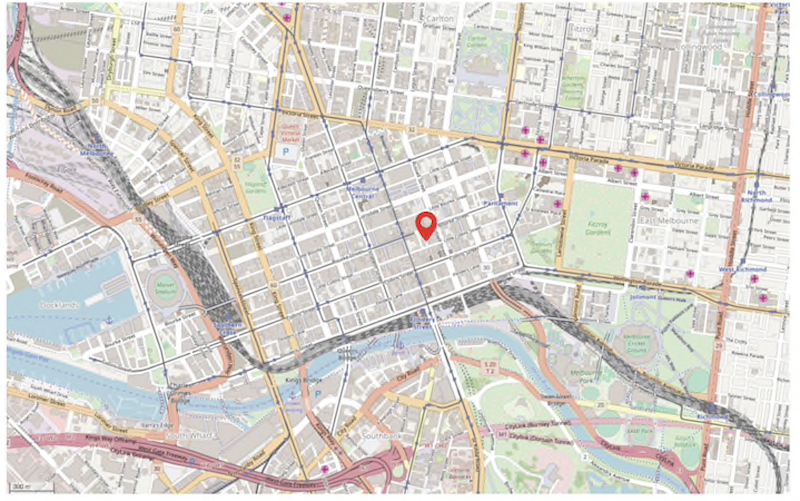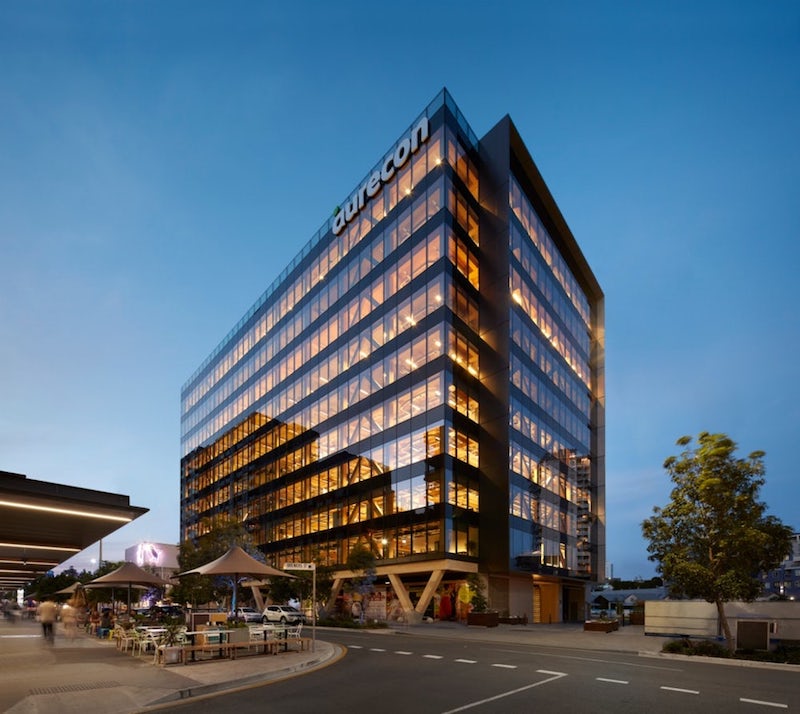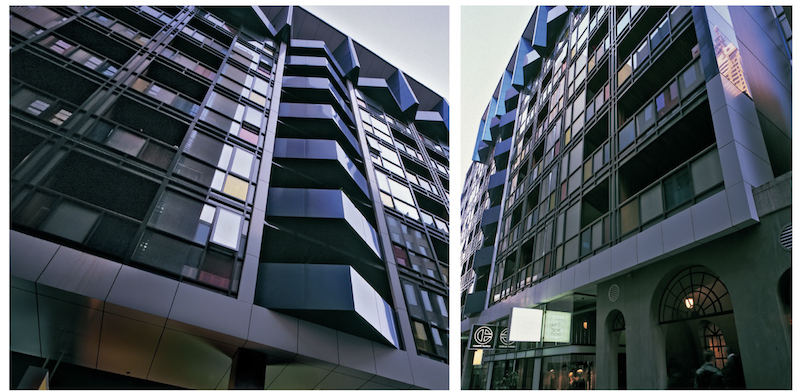The School of Engineering at the University of Melbourne in Australia recently announced plans to build a new campus, to open in the early 2020s, that would feature large-scale research and training facilities to test emerging technologies that address global social and environmental issues.
One of those technologies is prefabrication for construction, and the university has taken a vanguard role to push prefabrication’s market share within the country’s construction industry to 15% by 2025, from 5% currently. That increase would represent around 20,000 new jobs and 30 billion Australian dollars (US$21.1 billion) in growth.
“We are seeing huge demand in the building industry for new techniques that will allow for the development of faster and cheaper construction. The only way to reduce costs is to reduce the cost of manufacturing,” says Tuan Ngo, director of the Advanced Protective Technologies for Engineering Structures Group within the university’s Department of Infrastructure Engineering.
It's not always easy to pinpoint a movement's breakthrough moments. But an online article that Deloitte posted on February 26 makes the case for a high-rise project in Melbourne, completed in 2010, that deployed a construction technique where entire floors of the building were completed offsite and assembled onsite by snapping together the modules one on top of the other.
The location: Russell Place in Melbourne’s central business district. That real estate was problematic to build on because it sat over one of the district’s electrical substations. Weight restrictions limited the mass of any building constructed on the site, and ground vibration had to be minimized.
The land owner, a pre-eminent architect named Nonda Katsalidis, circumvented these roadblocks and restrictions by treating the construction process as a design-for-manufacture-and-assembly problem, rather than a building problem.

Russell Place, where the Little Hero building was assembled, sat over a primary electrical substation for Melbourne's central business district, which presented several construction limitations. Image: Deloitte Insights
Katsalidis’ twist on an already-established design-for-manufacturing technique was to “unitize” the building, so that each unit—in this case, each floor—was finished in a factory and then transported completed to the jobsite for quicker assembly, a la LEGO Duplo.
Executing this approach required making a digital model of the entire building, accurate to its light fittings, power sockets, washers, and door hinges. Deloitte’s authors called this BIM on steroids.
To pull this off, Katsalidis cofounded a technology company, Unitised Building in 2008, and partnered with a building firm Hickory Group to create the tooling required, and to develop and manipulate the models.
The Russell Place site was the first to host a building constructed with Unitised Building’s modular method. Completed in 2010, the building, called Little Hero, contains 63 one- and two-bedroom apartments and duplex penthouse residences, all of which sit atop seven retail shops, cafés, and restaurants. The unitized process not only complied with all of the site’s restrictions, but cut construction time by more than six months compared to a conventional approach: The eight-story building took only four weeks to erect, at a cost comparable to that of a conventional process.
Deloitte’s authors explain that what separated the unitized approach from conventional prefab modular design and construction at that time was that it was easier to customize, focused on mid- to high-rise construction, and allowed completed modules to be “snapped” together, in contrast to a kit of parts approach.
In addition, say the authors, unitization offered a new way to export BIM data. “It is possible for a firm to retain possession of the models and export only the instructions they generate, to guide the machines and workers in a remote contract manufacturing facility and the remote building site. The models are held domestically, where the engineering talent required to develop and maintain the IP in them is located.”
Deloitte’s authors note that unitization has since led to a larger discussion about different approaches to building as an activity. Rather than simply digitizing existing building practices … “we need to digitalize building by shifting the foundation of our operating model to a wholly different premise,” they wrote.
The unitized process sometimes requires improvisation, too. In 2017, Hickory Group was working on a site within Melbourne’s central business district where access was awkward. The crane that was needed to lift building units into place blocked a narrow laneway, making it difficult for local residents to access their properties.
To navigate the problem, the firm offered to build only at night. To prove this approach to skeptical a city council and residents, Hickory ran a trial build one night, which went unnoticed despite the firm warning nearby residents about it beforehand. With the council and residents convinced that installing building units at night would work, construction went ahead.

King 25, Australia's tallest timber building, was assembled using prefabricated engineered wood components. Image: Wonderful Engineering
Whatever success Unitised Building and other companies may have had, it remains to be seen whether prefab construction can get beyond the nascent stage in Australia.
Prefab, as a concept, got a boost when Australia’s tallest timber building, the 10-story 45-meter-tall (148-ft-tall) 25 King, an office and residential tower in Brisbane, opened earlier this month. Designed by the architectural firm Bates Smart, the building’s engineered-wood components were prefabricated offsite. The entire construction took 15 months to complete.
But supply and demand are still in question. One one hand, Strongbuild, which made prefab houses from an 8,000-sm (86,111-sf) factory in Sydney, last November lost a AUD$45 million contract and went into voluntary “administration,” Australia’s version of liquidation.
On the other hand, David Chandler, a former builder who is now adjunct professor in construction management at Western Sydney University, told the Australian Financial Review that the country could lose up to 200,000 construction jobs to offshore competition if it doesn’t set up a viable prefab construction industry within the next decade.
Related Stories
| Aug 11, 2010
New air-conditioning design standard allows for increased air speed to cool building interiors
Building occupants, who may soon feel cooler from increased air movement, can thank a committee of building science specialists. The committee in charge of ANSI/ASHRAE Standard 55 - Thermal Environmental Conditions for Human Occupancy—after months of study and discussion--has voted recently to allow increased air speed as an option for cooling building interiors. In lay terms, increased air speed is the equivalent of turning up the fan.
| Aug 11, 2010
PCA partners with MIT on concrete research center
MIT today announced the creation of the Concrete Sustainability Hub, a research center established at MIT in collaboration with the Portland Cement Association (PCA) and Ready Mixed Concrete (RMC) Research & Education Foundation.
| Aug 11, 2010
Study explains the financial value of green commercial buildings
Green building may be booming, especially in the Northwest, but the claims made for high-performance buildings have been slow to gain traction in the financial community. Appraisers, lenders, investors and brokers have found it difficult to confirm the value of high-performance green features and related savings. A new study of office buildings identifies how high-performance green features and systems can increase the value of commercial buildings.
| Aug 11, 2010
VA San Diego Healthcare System Building 1 Seismic Correction
San Diego, Calif.
Three decades after its original construction in the early 1970s, the Veterans Affairs San Diego Healthcare System Building 1 fell far short of current seismic codes. This not only put the building and its occupants—patients, doctors, nurses, visitors, and administrative staff—at risk in the event of a major earthquake, it violated a California state mandate requiring all hospitals to either retrofit or rebuild.
| Aug 11, 2010
Green Building Initiative launches two certification programs for green building professionals
The Green Building Initiative® (GBI), one of the nation’s leading green building organizations and exclusive provider of the Green Globes green building certification in the United States, today announced the availability of two new personnel certification programs for green building practitioners: Green Globes Professional (GGP) and Green Globes Assessor (GGA).
| Aug 11, 2010
29 Great Solutions for the AEC Industry
AEC firms are hotbeds of invention and innovation to meet client needs in today's highly competitive environment. The editors of Building Design+Construction are pleased to present 29 "Great Solutions" to some of the most complex problems and issues facing Building Teams today. Our solutions cover eight key areas: Design, BIM + IT, Collaboration, Healthcare, Products, Technology, Business Management, and Green Building.
| Aug 11, 2010
International Living Building Institute established to advance 'living buildings'
The idea of a Living Building, a high-performance building that produces its own power and cleans and reuses all of its water, is gaining momentum around the world. In an effort to oversee the global development of Living Buildings, the International Living Building Institute (ILBI) has been established.







